Affiliate links on Android Authority may earn us a commission. Learn more.
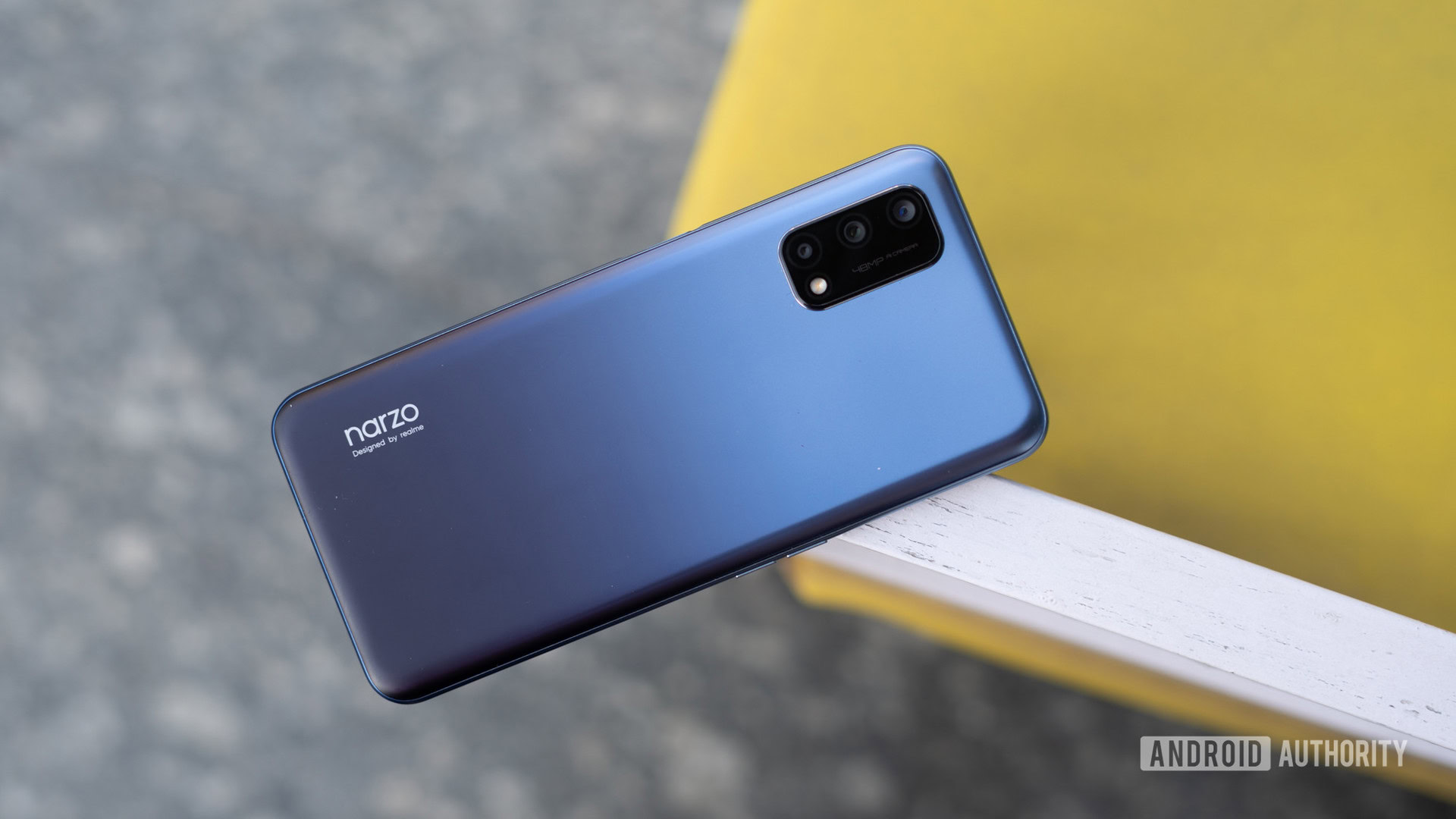
realme Narzo 30 Pro review: Compromises galore
Published onMarch 12, 2021
Realme Narzo 30 Pro 5G
MSRP:
What we like
What we don't like
Our scores
Realme Narzo 30 Pro 5G
The Narzo series is realme’s answer to Xiaomi’s POCO in India. For a brand that has been guilty of flooding the market with derivative variants, realme’s Narzo series serves one purpose: premium performance at an affordable price. This continues to be the case with the newly launched realme Narzo 30 Pro 5G.
The premise is simple: deliver a smartphone with class-leading specs, 5G capabilities, and a price point that is bound to make you take a closer look. However, a compelling spec sheet is no guarantee of excellence. In this realme Narzo 30 Pro review, we’ll see if the final product lives up to the promise as it looks to compete in the increasingly crowded mid-range space.
Does the realme Narzo 30 Pro have a good design?
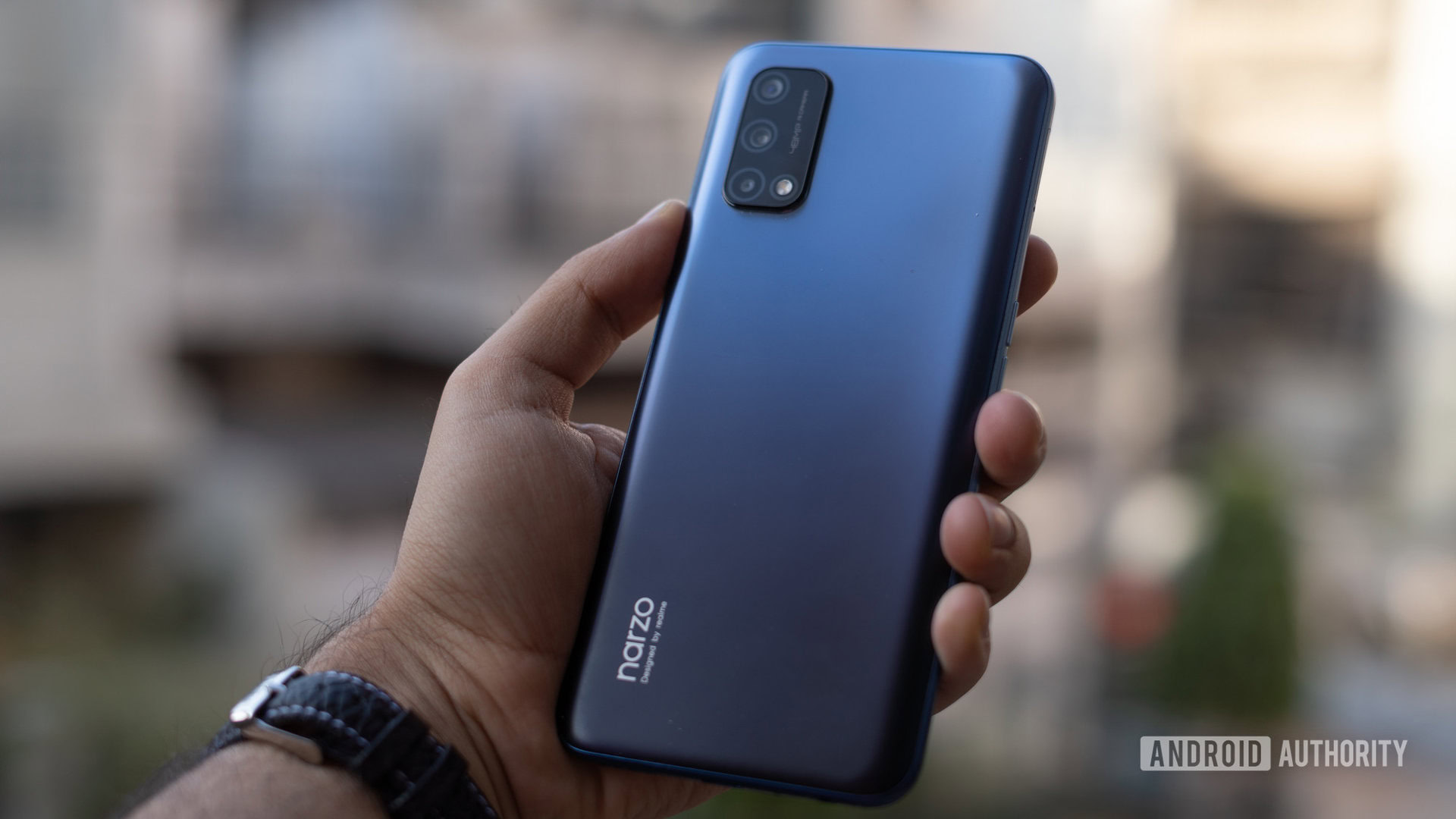
The realme Narzo 30 picks up a lot of design cues from the recently launched realme X7 Pro. Of course, significant downgrades have been made to hit a lower price point. This includes the switch to a polycarbonate mid-frame and a subdued gradient on the back panel.
There is a noticeable downgrade in materials, and I observed flex in the back panel.
While I didn’t mind the plain Jane look, some might find the lack of pizzazz a bit underwhelming. The phone doesn’t quite scream premium, and I noticed a bit of flex in the back panel while gripping it tightly.
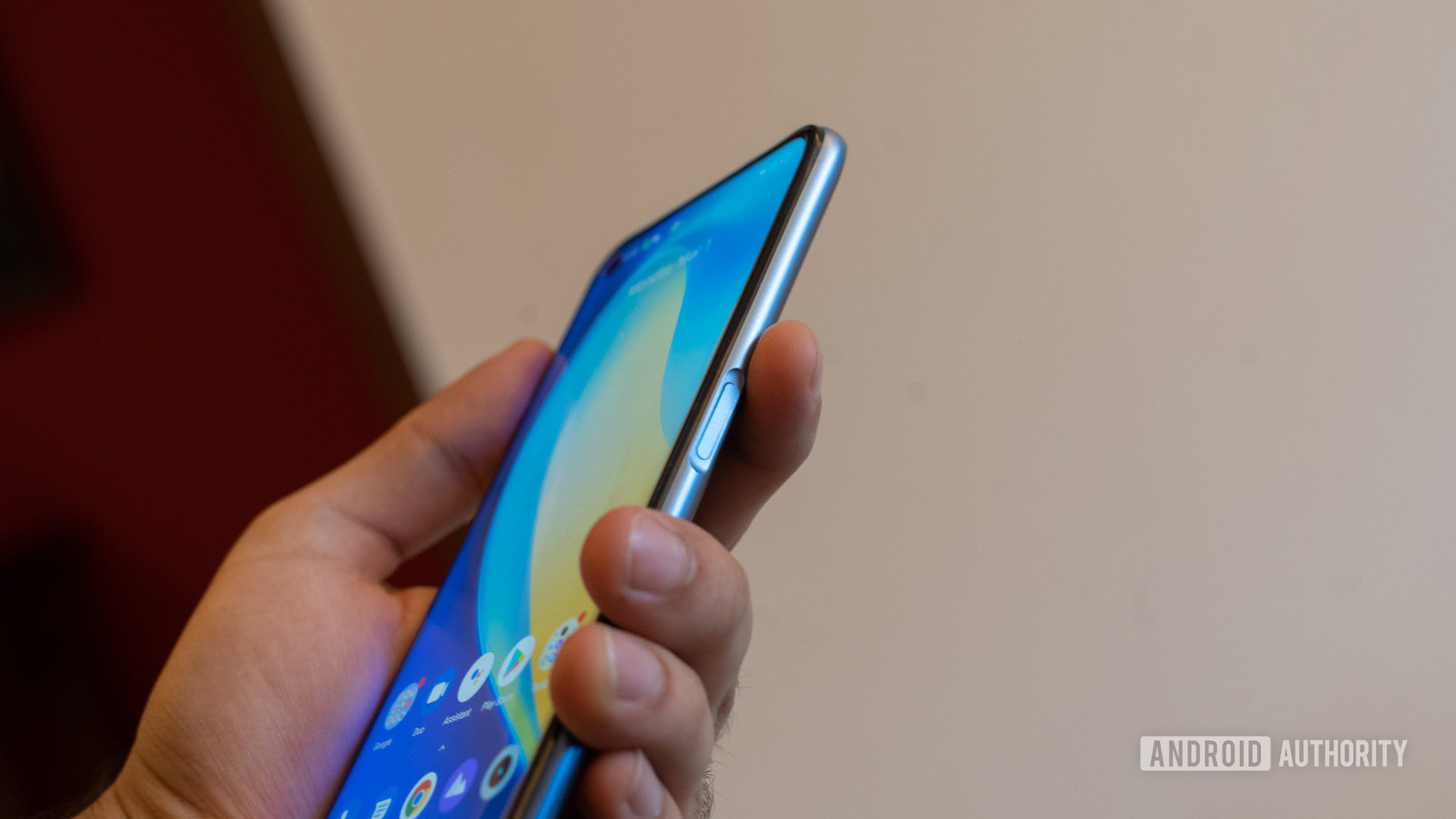
The right side of the phone has a power button with a fingerprint scanner embedded in it. The scanner was speedy enough to unlock the phone — no issues on that front.
Meanwhile, over on the left is a segmented volume rocker that I found to sit a bit too flush with the frame. Finally, along the bottom edge is the single bottom-firing speaker, a USB-C port, and a headphone jack.
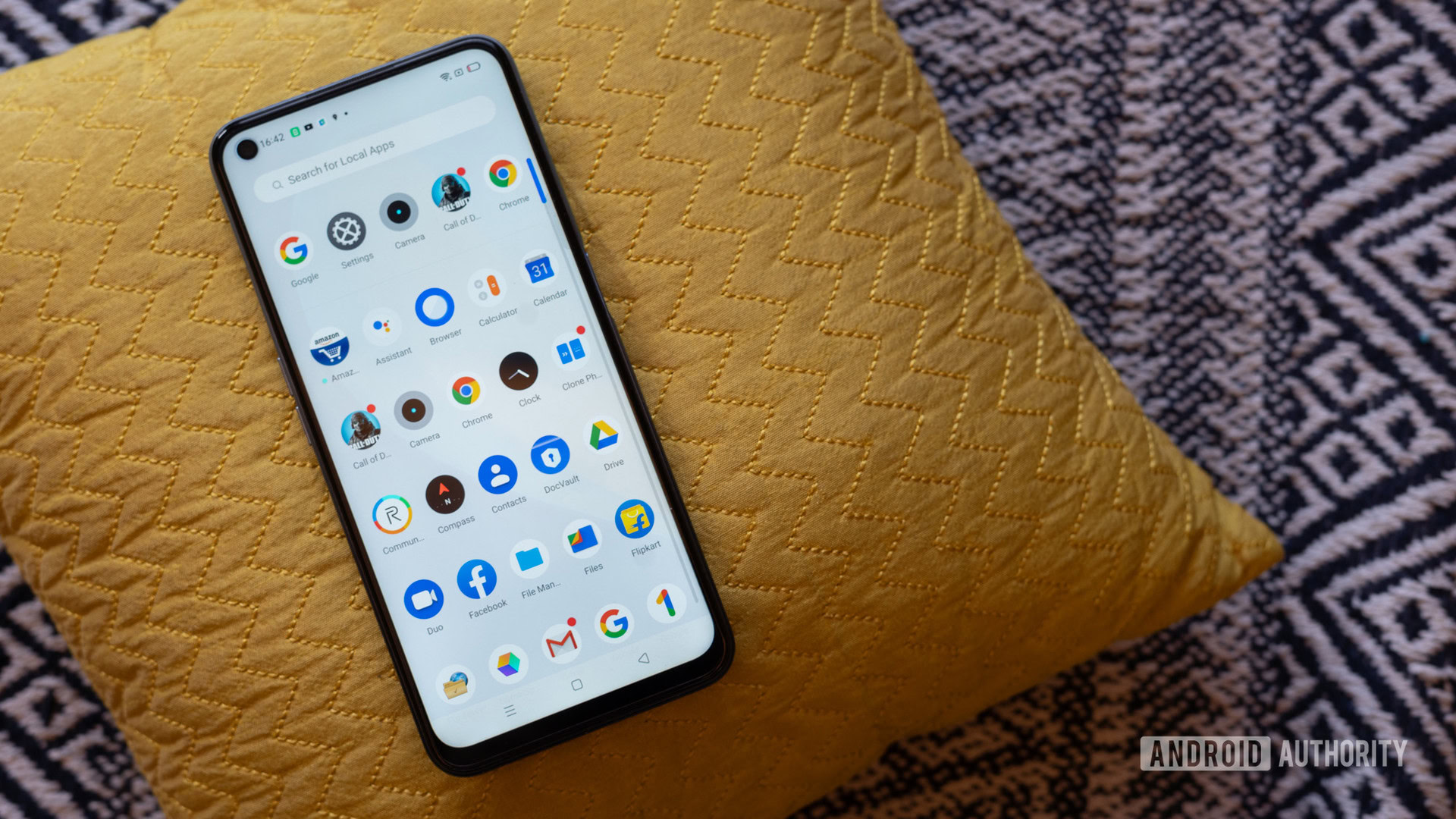
realme has been pushing high refresh rate panels on its phones for a while now, and the Narzo 30 Pro is no exception. However, unlike the X7 Pro, users will have to contend with an IPS panel here. It’s still got the 120Hz refresh rate, but the phone misses out on the inky deep black levels possible only with an AMOLED display.
That said, peak brightness levels are excellent and I found the default color calibration to be perfectly adequate out of the box. Like other realme phones, there’s an option to switch the calibration towards cooler or warmer shades. Additionally, the refresh rate can be set to 60 or 120Hz, or there’s an adaptive mode that dynamically switches between the two refresh rates.
The realme Narzo 30 Pro hits the performance checkpoint, but compromises have been made.
If it wasn’t obvious by now, quite a few frills and premium features have been cut here to hit the price point. Some good, some not so much. I don’t mind the polycarbonate shell, but the lack of stereo speakers, no official waterproofing — both of which are offered by the rival Xiaomi Mi 10i — as well as a hybrid SIM slot over dedicated slots for microSD and dual SIM cards is a bit off-putting.
How powerful is the realme Narzo 30 Pro?
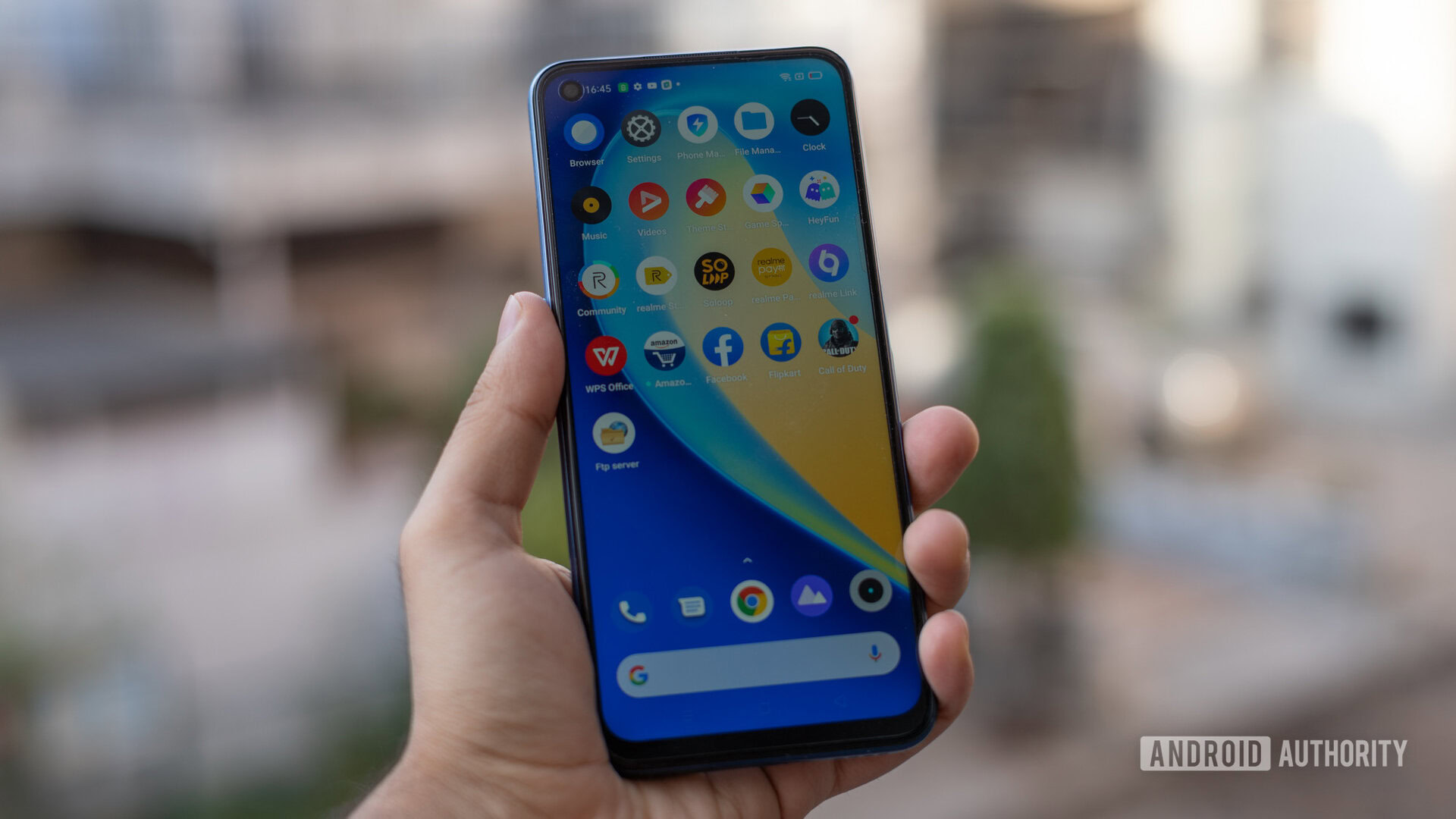
MediaTek’s recently launched Dimensity series of chipsets have had me intrigued. The 800 series in particular is focused on bringing a whole lot of grunt, with a value proposition attached to it.
In fact, these chipsets are placed quite favorably against the Qualcomm alternatives, at least as far as CPU performance is concerned. The Dimensity 800U in the realme Narzo 30 Pro goes up against the upper Snapdragon 700 series SoCs and brings four Cortex A76 cores to the table. This is in addition to the four Cortex A55 cores performing lightweight tasks.
Day-to-day performance is absolutely stellar and not once did I notice frame drops or the phone struggling to catch up with me. This is right in line with expectations, of course.
CPU performance is excellent, but the GPU lags behind a little.
Where the phone presents a hitch, however, is GPU performance. I had a smooth gameplay experience playing Call of Duty Mobile. However, graphics max out at the medium setting. Additionally, even at medium, pulling up the game assistant shows that the GPU is running at 99% capacity through most of the gameplay. Genshin Impact, another popular and graphically-taxing game, had choppy frames in busier scenes.
Overall, performance is more than adequate in CPU-bound tasks, but the phone shouldn’t be your first choice if ultra-smooth 3D gaming is a high priority — especially if you plan to hold on to the phone for a couple of years.
Over on the network side, the phone has 5G support as well. India doesn’t have 5G networks yet so I couldn’t test this, but it’s nice to be future-proofed.
How long does the battery last?
The realme Narzo 30 Pro keeps up with the times and is equipped with a suitably large battery. The 5,000mAh cell lasts through a solid two days of normal use. No complaints there.
Meanwhile, charging speeds are a downgrade over the realme X7 Pro, but 30W fast charging is no slouch either. A full top off from scratch takes just a little over an hour. There’s no wireless charging, but that’s to be expected for this price.
How good is the realme Narzo 30 Pro camera?
Simply put, the camera suite on the Narzo 30 Pro is pretty lackluster. The setup is predictable and in line with what most competitors offer at this price point: a 48MP primary sensor paired up with an 8MP ultrawide shooter and a 2MP macro sensor.
I expected quality results from the primary camera, but it struggles with HDR capture and blown-out highlights. On the face of it, images look quite good, but zoom right in and you will notice significant digital noise reduction artifacts. Additionally, the phone takes way too long to get a focus lock.
The default white balance selection is just a bit too warm, and the overall image is brighter with oversaturated blues. The image looks perfectly good to go on social media, but if you want natural tones, you’re out of luck. The overzealous saturation levels are particularly noticeable in the ultra-wide image above where the blue sky looks completely unnatural.

The macro mode does a decent enough job at getting up close to the object, but the low resolution disappoints. The image is just too low on detail, both on a big screen and on the phone. realme’s attempt to mask this with noise reduction makes it all the more apparent.
The 16MP front-facing selfie camera on the Narzo 30 Pro does a decent job at capturing selfies through there are telltale signs of skin touchups and over-exposure. Meanwhile, the portrait mode doesn’t do too well with hair. The bokeh fall-off isn’t bad but with curly hair like mine, the camera ends up blurring the edges.
Finally coming to video quality, I wasn’t that impressed. The exposure levels are all over the place and, like still images, I found focusing speeds to be a bit too slow while capturing video.
What I like about the Narzo 30 Pro
- The performance. For day-to-day use, and even a reasonable amount of gaming, the Narzo 30 Pro offers a lot of bang for your buck.
- The display. I’m in the camp that is absolutely fine with a quality IPS panel over an AMOLED display. The 120Hz refresh rate, high brightness levels, and default calibration had me impressed.
- The battery life. It’s not particularly exceptional, but the phone lasts on par with the competition.
What I dislike
- The build. realme has taken some drastic measures to cut the price of the Narzo 30 Pro and it shows. From the quality of materials to omissions like stereo speakers, there’s quite a bit missing here.
- The cameras. If all you ever do is look at photos on your phone, the cameras here do a serviceable job. However, the tuning could definitely do with some tweaking to bring it on par with the competition.
realme Narzo 30 Pro specs
| realme Narzo 30 Pro 5G | |
|---|---|
Display | 6.5 inches 1080x2400 pixels 20:9 IPS 120Hz Gorilla Glass 3 |
Chipset | MediaTek Dimensity 800U |
GPU | Mali G57 MC3 |
RAM | 6GB/8GB RAM |
Storage | 64GB/128GB |
MicroSD | Hybrid Slot |
Battery | 5,000mAh USB-C 30W charging |
Cameras | Rear: 48MP standard at f/1.8 8MP Ultra-wide at f/2.3 2MP macro Nightscape HDR Video: 4K at 30, 1080p at 120fps, EIS Front: 16MP at f/2.1 HDR |
IP Rating | N/A |
Headphone jack | Yes |
Connectivity | Dual nano-SIM slots Dual SIMs dual VoLTE 4G Wi-Fi: 802.11a/b/g/n/ac, 2.4/5Ghz Positioning system: GPS, aGPS, GLONASS, Beidou navigation system Supports Bluetooth 5.1 connections Supports aptX, aptX HD, and LDAC |
Security | Side-mounted |
Software | realme UI, Android 10 |
Colors | Sword Black, Blade Silver |
Dimensions | 162.2 x 75.1 x 9.1 mm |
Weight | 196g |
realme Narzo 30 Pro review: The verdict

The Narzo 30 Pro will appeal to a very specific kind of user. The phone strikes a balance between capable performance and desirable features like battery life and 5G. That said, 5G is far from a reality in India right now, which makes that particular selling point a bit moot.
Additionally, while the performance is great, it’s not as if the competition is lagging behind either. Priced at Rs. 16,990, the phones goes head-on against phones like the Xiaomi Mi 10i that costs just a little more but offer a much more well-rounded user experience that is worth the additional spend.
The realme Narzo 30 Pro isn’t a bad phone, but its sole raison d’etre isn’t enough for me to overlook the shortcomings. I would highly recommend looking at some of the best phones under Rs. 20,000 for more options before parting with your money.